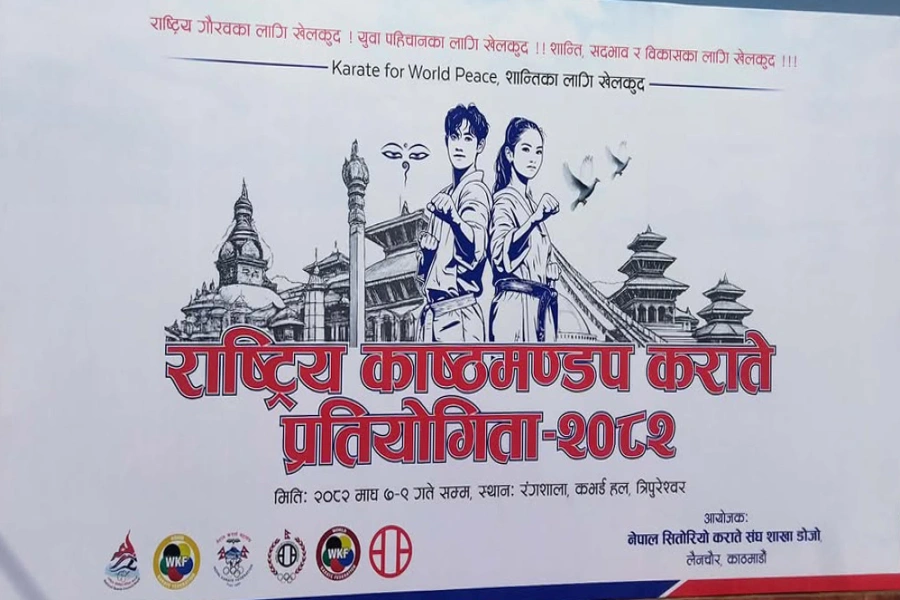Steel and plastic have largely supplanted the traditional metal utensils like copper and brass
Copper and brass containers were used for fetching and storing water from natural sources like streams, lakes, rivers, and wells. Since these sources are vulnerable to contamination, the use of copper and brass vessels might have helped to purify the water by killing pathogens upon contact with the metal surfaces.
People in Nepal have long used metal-based kitchenware and other goods in their daily lives. This traditional lifestyle was common even 40-50 years ago and still exists in many rural areas today. However, a growing number of people, particularly in urban and peri-urban areas, have started adopting modern lifestyles that use new synthetic materials and tools for quicker, simpler, and more cost-effective living. Despite the convenience of the modern lifestyle, it poses a threat to public health and the environment. When studying the use of metals in our traditional lifestyles, we can appreciate their importance in promoting public health and maintaining the environment. As the UN Secretary highlighted during a visit to Nepal, it is increasingly crucial to learn from our old traditions to make our lives more sustainable and protect the environment.
Entrepreneur who creates art

In Nepal, a large proportion of the population still lives in rural areas and adheres to traditional lifestyles. Historically, many Nepalese people relied on copper and brass vessels and utensils, which were widely available in local markets and built in cottage industries. These metals are considered sacred. Their affordable prices and lack of alternatives have made them practical choices. Copper and brass containers were used for fetching and storing water from natural sources like streams, lakes, rivers, and wells. Since these sources are vulnerable to contamination, the use of copper and brass vessels might have helped to purify the water by killing pathogens upon contact with the metal surfaces. The antimicrobial properties of copper and brass contributed to water hygienization. The use of these metals enhanced public health and also saved the energy and chemicals typically required in water treatment processes.
In the past, kitchen utensils such as cooking pots, stirrers, and serving plates were crafted from copper and brass. These materials not only served their primary function but also enriched our diets with essential elements like copper and zinc, crucial for our health. In Nepali culture, cow dung was used to mop homes, including the kitchen. Cow dung can contain a significant number of pathogens but the antimicrobial properties of brass serving plates may have played a role in neutralizing some of these pathogens. Copper and brass utensils, with their self-sanitizing qualities, likely contributed to disease control, especially when dishwashing water sources were prone to contamination. Copper vessels were also used for preparing cattle feed, which might have been fortified with essential elements. These elements could have then been transferred throughout the entire agricultural system, benefiting both livestock and crops. Consequently, it's a custom in many Nepali communities to present brides with copper and brass water vessels (known as Tamakogagri and taulo). Nowadays, however, steel and plastic have largely supplanted these traditional metal utensils.
Traditionally, a deep, heavy iron wok was used for cooking curries and boiling milk and an iron knife was employed for slicing fruits and vegetables. Using iron cookware and cutlery can enhance the iron content in food, potentially reducing the necessity for iron supplements, particularly for women. Likewise, preparing cattle feed in iron vessels can supplement the iron content, which is crucial for dairy cows and calves.
In Nepal, many people rely on natural resources, such as bodies of water like streams, wells, and rivers. They have a spiritual and cultural practice of flinging coins into these water sources. This age-old tradition may have contributed to keeping the water sources clean as coins were made of copper and silver back then. Furthermore, it may have helped raise funds to maintain the water bodies. Even today, individuals continue to fling coins into the Swayambhu Wishing Pond, which is a well-known example of this custom. It's noteworthy that the current role of wishing ponds may not be for water purification, as the water is not intended for drinking or household use. Nonetheless, this practice still serves to collect funds and preserve the cultural heritage.
Historically, public taps have been made from a range of metals, including gold. Notably, a golden tap known as Sun Dhara was installed in Kathmandu. While gold itself does not possess water treatment properties, gold nanoparticles do. Gold's rapid conversion of light to heat could have expedited water warming, aiding in pathogen elimination. Additionally, in Nepali culture, water passing through gold is considered sacred and believed to purify the individual holistically, which may also justify the construction of the golden tap.
Various metals, especially brass and copper, have historically been utilized for roofing, particularly in ancient temples. Metal roofs may have been advantageous for their durability and low maintenance, especially when only soil-based roofing materials were accessible. Copper and brass roofs have also been advantageous for water treatment, with rainwater harvesting being a prevalent practice historically.
Recently, despite the cost, an increasing number of people have started reusing copper, brass, and iron-made utensils for cooking and serving food and water in this modern lifestyle. This trend may stem from a desire to display social status or a recognition of the health and environmental benefits associated with using these metals. Nowadays, it is becoming trendy for authentic restaurants to serve their foods in copper and brass utensils. Copper and zinc are important elements for maintaining healthy blood pressure levels. As busy modern lifestyles contribute to an increase in blood pressure in patients, drinking water stored overnight in a copper glass is thought to be particularly beneficial for those with high blood pressure. The use of these metal utensils in our daily lives may also save money on supplements of essential elements, including iron. Recently, researchers have become increasingly concerned about the health impacts of microplastics and have turned their attention towards using metal utensils instead of plastic-based ones. To attract the use of metal utensils, essential metal utensils must be designed for compatibility with LPG gas stoves, hot plates, and induction stoves, and include items commonly used in contemporary kitchens, such as spoons, forks, and table knives.
The question of re-adapting old traditions always arises. A modest change in our present lifestyle, such as reverting to traditional methods like utilizing essential metal kitchenware over plastic, can have substantial benefits for public health, cost savings, and environmental protection. Nevertheless, caution is necessary when planning to reintegrate these old traditions into the modern era, as many factors have changed since their inception. An important precaution is to avoid storing highly alkaline and acidic substances in these metal containers, as alkali and acid are corrosive and can lead to negative health effects if ingested in large amounts.






































